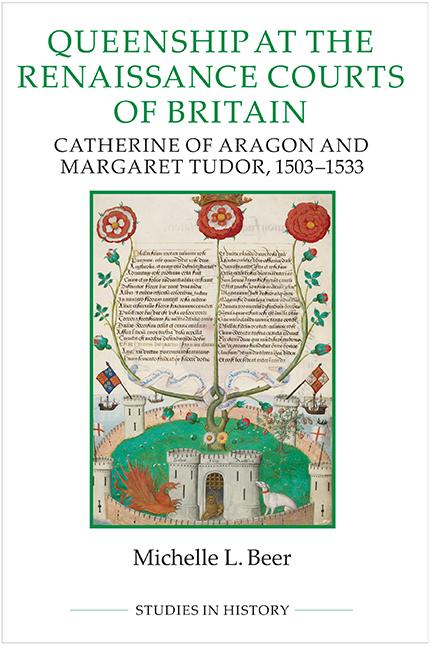Book contents
Summary
On 5 October 1516 Catherine of Aragon, queen of England, and her sisterin- law, Margaret Tudor, dowager queen of Scots, sat together in Catherine's chamber at Westminster, surrounded by their waiting women. We do not know what these women spoke of, although if the two queens had conversed, it would have been in English. Catherine, the Spanish bride of Henry viii, had lived in England for fifteen years and had become fluent in English, although she still spoke with an accent. We do know that they listened to music and watched their ladies dance. They had first met when Catherine married Margaret's elder brother, Arthur, in 1501. Margaret had danced at Catherine's first wedding, and Margaret had probably become friendly with her sister-in-law before she left to marry James iv of Scotland in 1503. Thirteen years later, the two queens would have had a lot to discuss, as their reigns encompassed many of the same tragedies and triumphs. They had both experienced leaving family and friends for a strange, cold kingdom, the loss of a spouse and children, the joys of court life, the seriousness of pilgrimage and the honour and awe of coronation. As two queens in the British Isles, they had adapted to cosmopolitan court cultures with shared humanistic, chivalric and Christian values, not only between England and Scotland, but across Europe as well.
Whatever they discussed, Catherine and Margaret were soon interrupted by the king, Henry viii, and the ambassador from Venice. Henry was a frequent visitor to his queen's chambers and, like his brother-in-law James iv, enjoyed informal pastimes with his wife and her ladies. Catherine, Margaret and their ladies would have known how to entertain the king and his guests through dancing, music and lively talk. Catherine would have been particularly interested in conversing with the Venetian ambassador, as Venice was an ally of France at the time and thus potentially an enemy of her nephew, the new king of Spain. She probably already knew about the newly signed Treaty of Noyon, the peace between France, Venice, and Spain, and she may very well have discussed its implications with the ambassador on this occasion. Catherine had always been a politically active queen consort, and her diplomatic experience and connections ranged across Europe to encompass the families of her sisters and their descendants.
- Type
- Chapter
- Information
- Queenship at the Renaissance Courts of BritainCatherine of Aragon and Margaret Tudor 1503–1533, pp. 1 - 26Publisher: Boydell & BrewerPrint publication year: 2018



